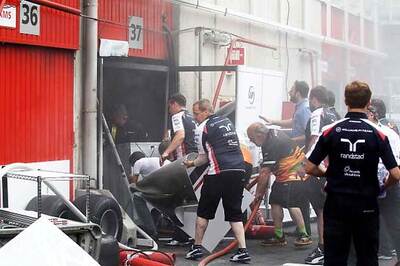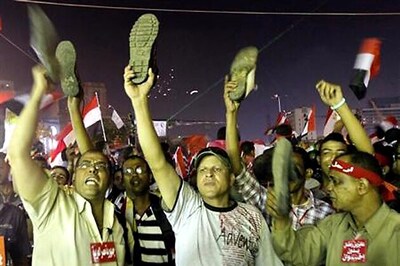
views
While all of India must protect itself from the virus, the pattern of some states being far more affected than others raises questions about the possible reasons for the predilection which appears to be a feature of both the waves in India. Maharashtra has an unenviable position at the top of the leader board, while Tamil Nadu, Karnataka, Gujarat, Kerala and Punjab feature fairly regularly as contributors to rising numbers of new cases. Other states, such as Chhattisgarh too, are reporting rising numbers with high case fatality rates. Around 80-90 per cent of the new infections reported in recent days came from eight states.
The central government has dispatched teams to Maharashtra, Punjab and Chhattisgarh to evaluate the situation. Maharashtra has imposed a night curfew and lockdown on weekends. Severe restrictions have been placed on public gatherings, transport, malls, restaurants and places of entertainment, with movement permitted only for essential needs.
Why is Maharashtra so vulnerable to surges of infections, even as other states with elections and large religious gatherings appear to be less affected? While the contributory causes of the high rates of infection need evidence-informed elucidation, based on extensive data analyses, several plausible reasons can be listed as hypotheses. There may be some factors we have not yet recognised but there are other factors which we can list even now.
Maharashtra’s many challenges
Maharashtra is among the more urbanised and industrialised parts of India. Five among India’s top 20 populated cities are in Maharashtra. They are: Mumbai, Pune, Nagpur, Thane and Pimpri-Chinchwad, Mumbai leads the national list and has high crowd density in its large slums and low-income housing colonies. It also has a very high number of international and domestic travellers arriving by air, rail, road and ship. Its local train network, which forms the lifeline of the city, transports huge numbers each day. Any foreign virus or its variant is most likely to land in India, at the Mumbai airport, and spread from there across the city and surrounding districts. Comparatively, people density and travel volumes in urban areas are lower in most other states, especially those in central and eastern India. The industrial zones in and around Mumbai provide the crowded worksites that a virus finds easy to infect.
ALSO READ| In India’s COVID-19 Fight, Letting Pediatrician Vaccinate Adults Can Be a Game Changer
States which have higher proportion of rural population have lower rates of transmission and lower numbers of severely ill cases. This is because rural residents not only have lower crowd density but also live in more ventilated houses and work in open fields. They also have lower levels of co-morbidities like hypertension, diabetes, heart disease and obesity than urban dwellers. Air pollution levels too are lower. Even if they get infected, they are more likely to be asymptomatic or mildly affected, discharging far less virus particles than those who are sick. That too reduces the transmission rates.
Similar examples exist
This pattern is not unique to India. African countries, and even our South Asian neighbours, too display the same pattern of lower infection rates and milder cases in their rural regions compared to big cities, even after adjusting for differences in population size. Lack of affordable public housing leads to growth of slums, which permit a speedy spread. This social determinant needs fixing. However, the larger rural segment of countries in Africa and South Asia will slow down the spread.
Other factors too contribute to variations in the case count. There are questions to be asked before we compare the numbers of diagnosed cases. What is the testing rate, in terms of tests per million population? What is the test positivity rate, after adjusting for the tests per million? If too few tests are performed, the overall number of cases detected will be low, even if the test positivity rate is high. It is also important to assess the ratio of nucleic acid tests (RT-PCR) to rapid antigen tests in each state, as the latter has more false negative test results than the latter. Testing rates also tend to be lower in rural areas than in urban areas. Mildly infected persons may not even be tested as they don’t report an illness.
The rates of transmission also depend on how well public health advisories are followed, with respect to masks, physical distancing and avoiding crowds. Even cities which observed some precautions last year abandoned them in January under the illusion that ‘herd immunity’ had arrived. That gave ample opportunity for both the wild virus and its variants to spread fast, unimpeded by earlier barriers.
ALSO READ| A Year After Lockdown, We Have Learnt Going Local is the Best Way to Fight a Pandemic
Some of the states in eastern and north-eastern India are witnessing less severe spread of infection despite elections and some crowded events. It is possible the virus has not been disseminated to these regions with the same intensity as in the highly urbanised and industrialised parts of the country where it arrived and spread fast. We must remember that the viruses, especially the variants, have not been sprinkled uniformly across India. So, the dynamics of transmission will vary in different locations. It is likely that Mumbai indeed is Gateway of India for viruses of foreign origin to enter. From there, and other points of entry, the viruses will travel with people. They will reach faster to well-travelled areas while they will take longer to reach other areas and only do so through a much smaller number of infected people.
How to fight the virus
The response has to be to battle the virus where it is most active while protecting other parts of the country from its spread. India is too large a country to have a ‘one size fits all’ strategy. Currently, Mumbai and other big cities of Maharashtra need to rigorously contain transmission. Localised lockdowns, to isolate hot spots in cities, may help but there has to be absolute commitment to masks in public and avoiding crowded events for several months more.
Simultaneously, vaccination must be speeded up. Even when transmission rates fall as a result of these stringent restrictions, discipline must be maintained without rushing to celebrate illusory ‘herd immunity’ and abandoning protective public health practices. In parts of India which are presently less affected, restrictions can be less stringent but general public health discipline must be maintained. The virus will love to crash celebrations and race to the rallies. So, the states which are less affected must retain that advantage by being cautious, even as Maharashtra and other highly affected states battle to overcome the surge and restore near normalcy.
Read all the Latest News, Breaking News and Coronavirus News here. Follow us on Facebook, Twitter and Telegram.




















Comments
0 comment